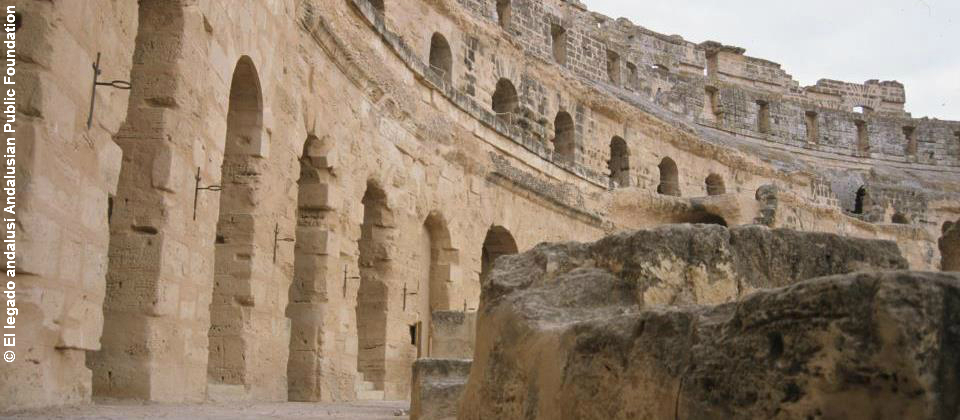The Amphitheatre
This huge, elliptically-shaped amphitheatre is 148 m. long by 122 m. wide and has a perimeter of 427 m. Though smaller than the Coliseum in Rome, it was the third largest amphitheatre in the Roman world, considerably larger than those of Arles, Nimes and Verona.
No inscription remains to indicate who its builder might have been, but the most likely hypothesis attributes its construction to a proconsul in Ifriqiya, the ephemeral Emperor Gordian I (r. 238 AD), an ostentatious patron of letters, the arts and sport, and an enthusiastic follower of the games.

The collections of mosaics at the Museums of El Jem and Bardo give us some idea of the sort of games and spectacles that were put on in these arenas: gladiatorial combat was popular, but the highlight of the games was the confrontation of wild animals, such as lions and leopards.
On October 26, 1979, the Amphitheatre of El Jem was placed by UNESCO on the World Heritage List.
It has served for the shooting of famous international films such as Monty Python’s Life of Brian or Gladiator.
On the other side of the road to Sfax, a smaller amphitheatre can be found. The oldest one (1st century BC) has simply been cut into the rock. The second amphitheatre is superimposed on the former one.
The Roman villas
Excavations have uncovered thirty villas belonging to wealthy citizens. The most beautiful one, villa “Africa” is property of an aristocrat. It was restored to the splendour of its 3,000 m2, and is probably the most lavish home of Roman Africa discovered so far. These dwellings, paved with colourful mosaics, usually with mythological motifs, were built around an inner courtyard or a garden surrounded by a colonnaded gallery. Several of these mosaics have been transferred to the El Jem Museum while others remain on site.

The Museum
El Jem Museum offers a remarkable collection of mosaics from El Jem and the surrounding area
In the main room below the gallery the visitor can admire the famous mosaic of Orpheus enchanting the animals. Other scenes show a procession in honour of Dionysos, a tiger attacking two wild asses and a lion devouring a wild boar.








